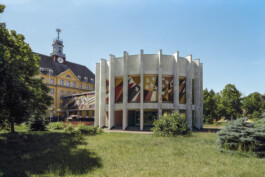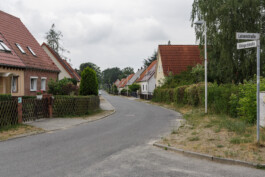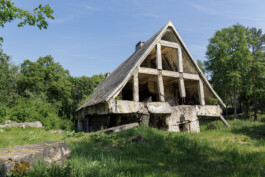

















The Forbidden City
Just outside Berlin lie the towns of Wünsdorf-Waldstadt, Kummersdorf-Gut and Sperenberg - places which most inhabitants of Berlin and Germany are unlikely to know much about. And yet all these places and their surroundings are steeped in contemporary history.
I was born in Berlin, but spent the greater part of my youth living in Wünsdorf, before moving back to Berlin at the age of 23. It was only through the change in perspective of this move back to Berlin that I became acutely aware of the shrouded history of the place where I had lived during my adolescence.
The road which now leads from Zossen to Wünsdorf was for many years impassable, due to a barrier point, behind which the Soviet garrison was located. Many houses and apartment blocks where my friends and family used to live, or indeed still live, were built during the times of national socialism or later by the occupying Soviet forces for soldiers and their families. My first girlfriend lived directly opposite a blown-up air-raid shelter in Waldstadt. We often used to meet there and sit on top of it, as if it were the most normal thing in the world.
With the project from which this book has developed, I photographically traced and investigated the most relevant events, sites and changes in Wünsdorf and its surroundings spanning four eras. Here, I give an insight into the former use of these sites extending from the imperial age, through the times of national socialism and the occupation by Soviet troops right up until the present age.
The relics discovered from various time periods have prompted me not only to take photographs myself, but also to include other material. I have thus investigated various archives for information, documents and older photos and film recordings.
One lead even took me to Russia, to the town of Zhukov, where the diorama from the Russian garrison had been reconstructed after its removal from Wünsdorf.
In the course of the book, I illustrate how Wünsdorf and the surrounding area developed into such significant military locations: Which facilities were most important and their purpose, sometimes appalling.
The vestiges of numerous historically significant events and developments can be found in this area: The construction of the first Central European mosque, the test area for railway pioneers, the area’s use as an artillery range, the place of custody for Rosa Luxemburg’s corpse after her murder, research in the field of rocket development, a test area for the uranium programme, a training area for athletes of the 1936 Olympics, the German High Command for the Army and Armed Forces, the High Command of the Soviet Armed Forces in Germany, the conversion of military buildings and areas into administrative and residential complexes, and the construction of one of the largest reception centres for refugees in Germany.
The use of various buildings and areas has changed over time; to some extent the same facilities that were used by the Nazis were later used by their opponents, perhaps taking on greater significance by the latter. One could almost surmise that a dark and terrible chapter of history in this place had been “overwritten”, which is why I consider it important to document this historical evidence in unbiased, factual pictures and text, throughout which a critical approach to history is vital.
3D model of area of the Officers' Mess and archive film from the area

The Forbidden City
Published by Kerber, April 2020
ISBN 978-3-7356-0685-3
Hardcover 24,5 × 32,5 cm, 92 Pages, 87 colored and 25 b/w illustrations
Languages: German, English
Text by
Johann Karl, Karoline Karl
Design by
Carsten Eisfeld / Eberle & Eisfeld, Berlin
There are still copies for 45€ availabe, just write me an e-mail for a copy.